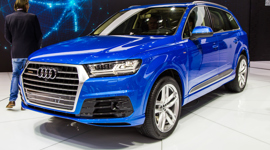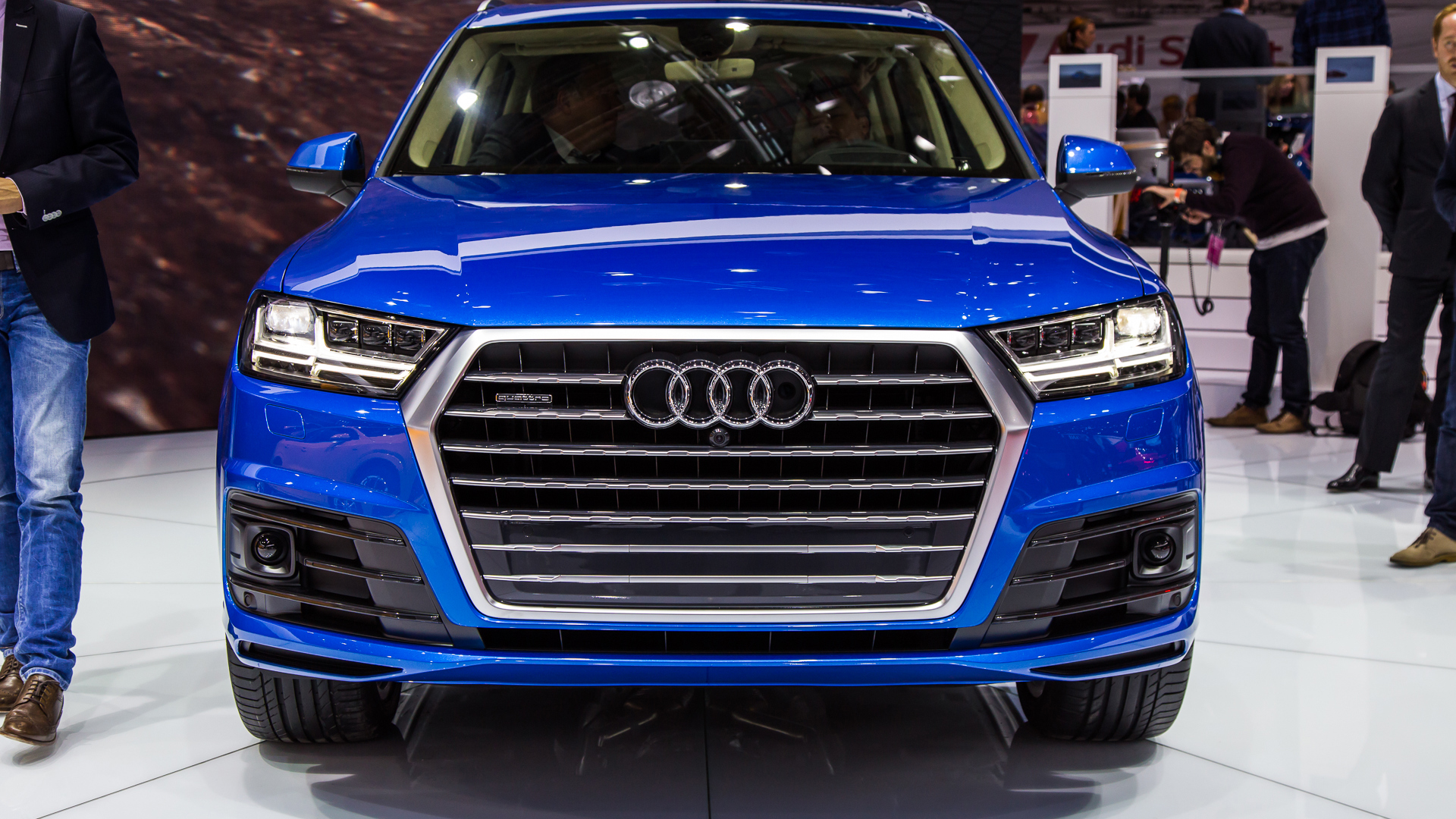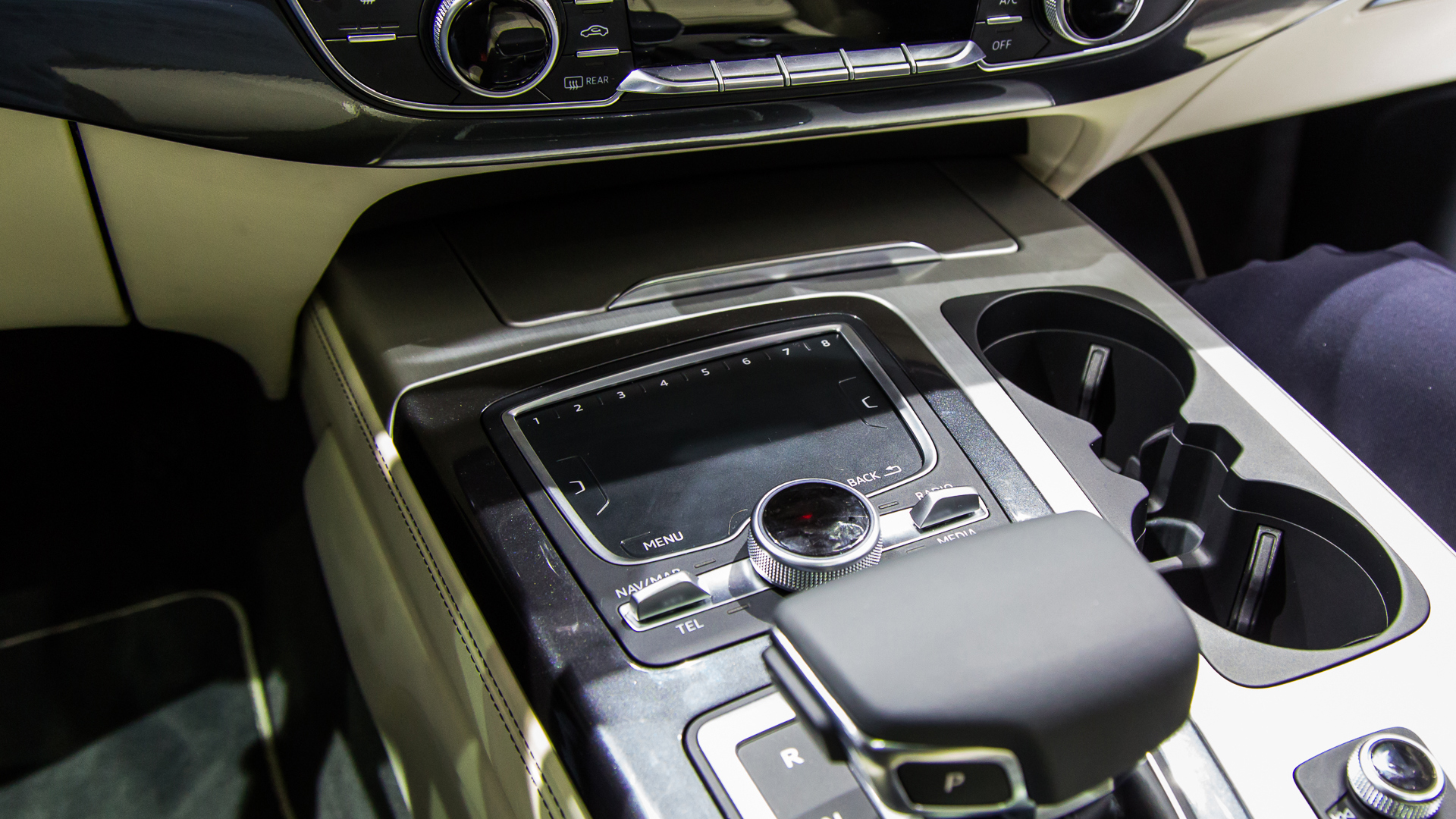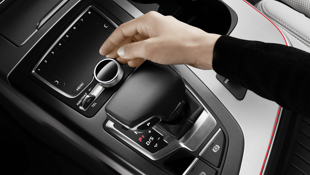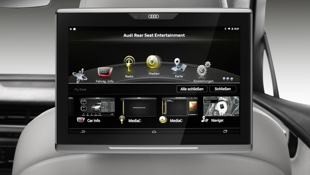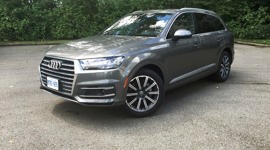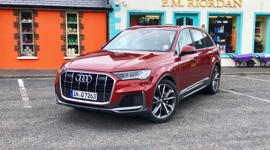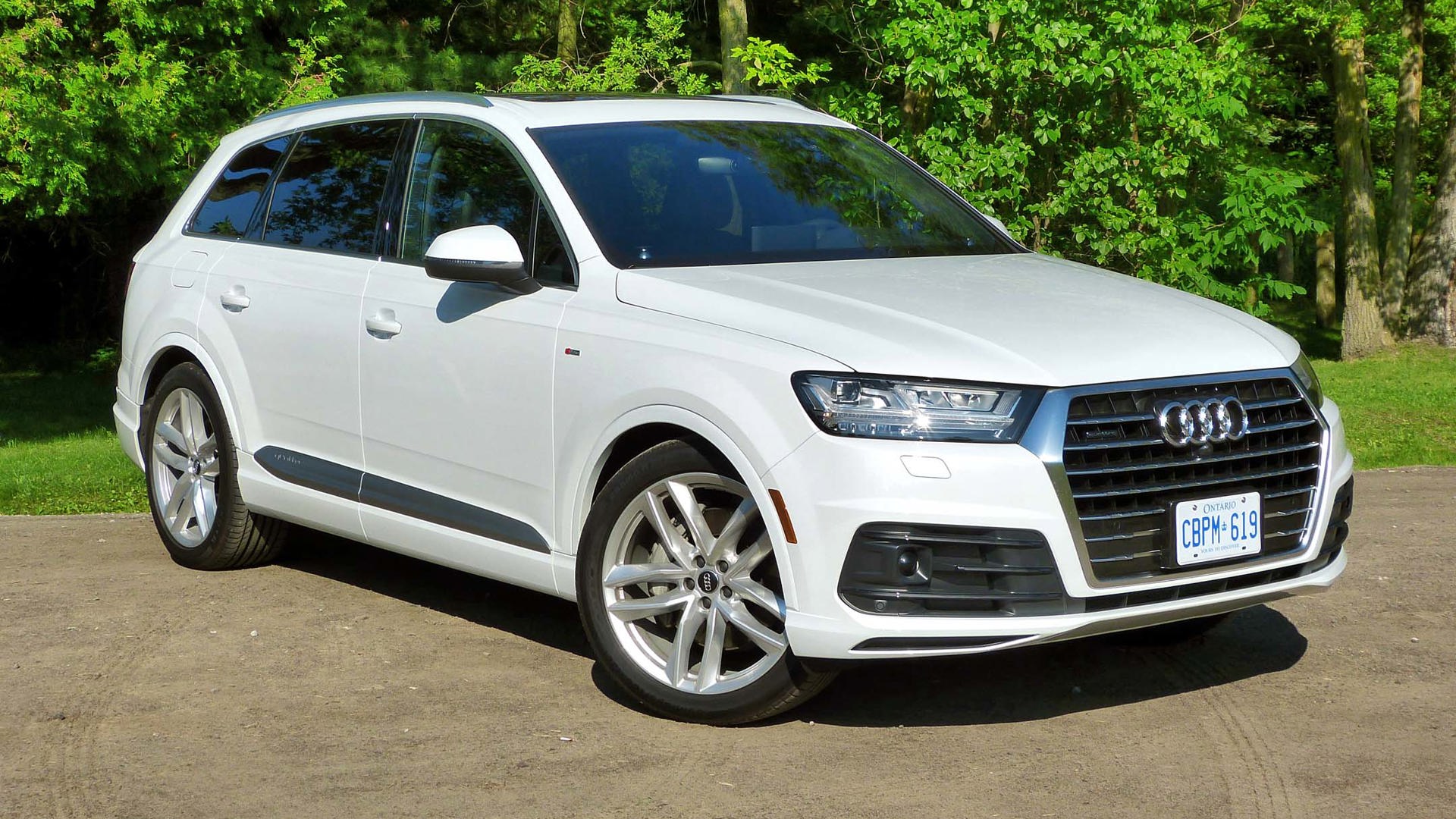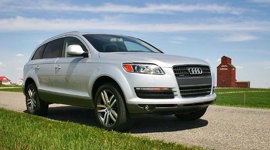With the backdrop of the Detroit Auto Show, the Audi Q7 seems at home.
America – with its history of gobbling up bigger and bigger cars as much as possible, the utility and truck markets are again exploding. Automakers like Hyundai, Kia, and Volkswagen have seen dips in sales due to their lack of utility and truck choice. For others, especially when you get into the premium marques, the truck part of that sales equation becomes less of a problem.
Audi, with a range of utilities – Q3, Q5, and Q7 – is equipped to take on the demand of the American marketplace. However, it’s not the US of A proving to be the biggest boom. If you really want your investment portfolio to succeed as an automaker, you must look East.
First-time novice, second-time master
When Audi decides to get into a segment, the formula always seems to work the same way. Build a product that changes the segment in a way – mix it up. For the second generation, innovate upon the original and make it something more than the sum of its parts.
The original Audi TT performed this disruption maneuver when the first generation was released in 1998. It changed what we thought a sporty little coupe could be.
By the second generation, Audi had studied their TT for seven years in the real world. There were complains and Audi analyzed the faults of the first-generation car. Once they thoroughly incorporated all their newfound solutions, the second-generation car was much more than the original TT could ever be.
While the utilities segment isn’t as fun, fancy, or exciting as sports cars, the same formula applies. The Q7 shook up the segment (slightly) upon its launch. Then, when all the dust settled, Audi decided they could do it a hell of a lot better than they had done previously.
Bigger does not always mean bigger
If the face of the well-practiced method of building a car bigger on the outside to make it bigger on the inside, Audi has been a clever German engineer – make it smaller outside and give occupants more space inside.
By relying on more high-strength materials for body construction and taking a methodical approach to packaging, the Q7 offers the longest cabin in its class while shortening the exterior length. Part of this comes down to mounting the engine lower so the cabin can come forward. But, the remainder is mainly due to a methodical approach to interior design and engineering, taking on each component piecemeal to create a roomier interior cabin.
Playing with physics
One of the core pillars of Audi’s approach is lightweighting. Instead of trying to beat physics, Audi engineers are playing the game within the rules by making a vehicle with less mass.
Ultra-high-strength hot-shaped steel and aluminum account for the majority of savings in body construction. For an apples–to-apples comparison, the new Q7 3.0 TDI will tip the scales some 325 kg lighter than the outgoing model – 71 kg of that total weight savings comes from lightweight body construction.
The rest of the weight loss is like something out of a Mazda MX-5 engineer’s manifesto.
Front seats: 5 kg savings. Second row seats: 13.7 kg cut. Cooling system: 8.7 kg. Drivetrain: 20 kg loss. Front axle: 27 kg. Rear axle: 40 kg. Exhaust system: 19 kg. And on, and on, and on…
If that weren’t enough, the Audi Q7 will also boast the best drag coefficient in the segment at 0.32.
Efficient hearts
All the lightweighting in the world won’t help if ancient diesel and gasoline engines power your newest vehicle. But Audi had updated its range of powerplants to keep up with the latest standards for emissions and efficiency.
Two V6 options will anchor the Q7 engine lineup.
The first, a refreshed 3.0 TDI, will deliver 272 hp and 443 lb-ft of torque, good for a sprint to 100 km/h in 6.3 seconds and on to a top speed of 234 km/h. That performance won’t come at much of a cost either, as Audi states the new TDI will boast a fuel consumption rating of around 5.7 L/100 km (though that’s not an official Natural Resources Canada 5-cycle rating).
The other V6, a 3.0 TFSI, will give you more horsepower at the expense of torque. Rated at 333 hp and 325 lb-ft of torque, the gasoline fed V6 will lop 0.2 seconds off the sprint to 100 km/h and clock in with a 250 km/h top speed. With a 7.7 L/100 km consumption rating, the cost of performance goes up, but only slightly.
A more efficient 3.0 TDI V6 (218 hp, 369 lb-ft) and a 2.0 TFSI I4 (252 hp, 273 lb-ft) will also join the engine lineup. We’re unlikely to get the second diesel V6, but the 2.0 TFSI is engineered for use in China and the USA – the latter meaning we are also likely to get it here.
All engines will be mated to an eight-speed tiptronic automatic transmission.
Technology never looked (and worked) so good
As new technology is released unto the world, our expectations for automotive technology – in the form of safety technology or infotainment – increases. Audi’s new full-size people hauler will have tech in spades, no matter which seat you occupy, built for people around the world (this is important).
Up front, Audi’s Virtual Cockpit (which debuted on the new Audi TT) will sit front and centre in the instrument panel. The new configurable display goes without the typical two-dial middle-screen layout for a completely digital experience. It also comes with almost infinite configurability so the driver can set up the display just as he or she pleases.
A new Audi MMI will also feature in the centre stack along with an updated touch pad. While the MMI itself is important, the larger touch pad makes it easier for writing Chinese characters, a main complaint of the old unit. This is what I meant earlier about technology being accessible for all. When you have a global market to serve, one region may see the larger pad as a luxury while another region sees it as a necessity. Everyone wins in the end.
A concerted effort, for better or for worse, was put on minimizing buttons to control the MMI system. We’ve seen other automakers try to do this before and it usually doesn’t produce a user-friendly experience. However, it does allow for compactness when designing dashboards, making the interior a more airy environment.
Google Android Auto and Apple CarPlay will debut on the Q7 as well, one of the first vehicles worldwide to offer the much touted connected technology.
Audiophiles aren’t left out either as two 3D audio systems will be on offer. Occupants in the second row will have tablets at their fingertips, doubling as rear seat monitors, and powered by NVIDIA Tegra 4 processors – a whole other kind of horsepower.
In Europe, the Q7 will come with LTE and WiFi hotspot capability. But, if prior conversations with Audi representatives hold true, this is unlikely to come to Canada.
While entertainment technology usually gets most of the attention, its safety tech that’s truly on the rise in the automotive industry.
Rear parking aid, adjustable speed limiter, rest recommendation and the safety system Audi pre sense city will arrive as standard equipment on the Q7. A surround-view camera and park assist system will be part of the “Parking” package. Cross-traffic assist, exit warning system, and trailer assistant make up the “City” package. The “Tour” package even makes the Q7 semi-autonomous with adaptive cruise control and ACC stop & go. The latter system can completely take over during congested highway situations, keeping speed with the cars around you while controlling steering to keep you in your lane. This system works at speeds under 65 km/h.
Technophile meets familyphile
Just because you have kids, pets, or other precious cargo to haul around on a regular basis doesn’t mean you need to sacrifice your wants in this day and age. The automotive market is willing to cater to you, your kids, and their friends who might occupy the optional third row.
With lightweighting in effect, the days of inefficient large utilities are gone. The Q7 proves it and does so with style and German innovation.
Even with all the powertrain technology in the world – from direct injection to hybridization – you can’t trump physics. If an object has more mass, it takes more energy to move said object. Cut the mass and you’ll slash the amount of effort required to get said object from point A to point B.
It’s with this focus on weight savings that Audi introduces us to the second-generation Q7 full-size SUV. Engineers have somehow lopped 325 kg (716.5 lbs) of weight off the biggest of Audi utilities. But, the German engineers didn’t stop there…
The current Audi Q7 is a formidable-looking utility. It’s an imposing brute with a big grille and equally big body. The new model, on the other hand, has learned a lesson – that biggest isn’t always best – and if you have available to you the brightest minds in the business, you can be the best by being cunning.
The current Audi Q7 is a formidable-looking utility. It’s an imposing brute with a big grille and equally big body. The new model, on the other hand, has learned a lesson – that biggest isn’t always best.
In almost every measurable exterior aspect the Q7 is a smaller utility than its predecessor. It’s shrunken, now just 1.74 meters (5.7 ft.) in height, and narrowed, sporting a width of just 1.97 meters (6.5 ft.). This downsizing works to Audi’s benefit, achieving a quite astounding 0.32 cd (drag coefficient). To put that in perspective, the Volkswagen Touareg has a cd of 0.37. Even with this exterior shrink-ray treatment, the Q7 manages to increase interior space for passengers and cargo while reducing overall body length and wheelbase.
Inside, the Q7 is given the latest in Audi MMI and Audi Virtual Cockpit features. Some may boo as the next-generation Q7 offers up less buttons on the center console. However, Audi says the now-haptic MMI is more intuitive, providing a user-friendly infotainment experience. And, if you decide to forego the screen, a new natural speech control system can react to voice commands, such as “I want to listen to my iPod.”
The virtual cockpit, debuting on the new Audi TT, runs on a 12.3-inch TFT display and provides multiple views – such as traditional dials to custom presets with maps and vehicle information – creating a driving experience specifically tailored for the driver.
Those in the back won’t be left out in the non-tech cold either, as Audi will offer the Q7 with one (and optionally two) 10-inch tablets that act as monitors for rear seat passengers. Just like the virtual cockpit, the tablet will be powered by NVIDIA hardware for the best viewing experience possible.
Bang & Olufsen will continue to blast their theatre-quality tunes in the Q7. A new 3D sound system adds speakers to the A-pillars to “provide the spatial dimension of height so that the music appears to be coming from a large virtual stage.” That stage also pumps out 1,920 watts of amplified awesomeness.
It isn’t just the audio that’s cranked up to 11. Under the hood will sit a range of engines all delivering improved fuel economy (26 percent improvement on average). Also, a first for Audi, a new plug-in diesel hybrid will join the Q7 range.
On the traditional propulsion front, the Q7 will be available with a 3.0L TDI V6 with 272 hp and 443 lb-ft of torque, and a 3.0L TFSI V6 producing 333 hp and 325 lb-ft of torque. A 2.0L TFSI will likely be available later; it rings in at 218 hp and 273 lb-ft. An ‘efficiently-tuned’ 3.0L TDI with 218 hp and 369 lb-ft of torque has also been announced but likely won’t be available in Canada.
The new plug-in diesel hybrid Q7 e-tron offers up similarly impressive numbers: 373 hp and 516 lb-ft of torque of combined system output. While the new model with Quattro all-wheel drive achieves stellar fuel economy, at 1.7L/100km on the NEDC, it will also accelerate to 100 km/h in 6.0 seconds. Oh, and it will drive along without burning any fuel for a distances of up to 56 km.
The Audi Q7 will debut to the public next month at the North American International Auto Show in Detroit with an expected on-sale date of late summer.
| Competitors: Cadillac Escalade Infiniti QX80 Land Rover Range Rover Lexus LX Lincoln Navigator Mercedes-Benz GL-Class |
